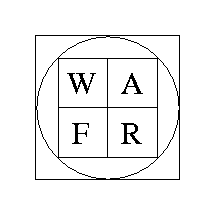- Please use wafr.sty to prepare
the final version of your paper.
Please see example.tex for an
example file. There are a few general remarks at the beginning of
example.tex, which you may find useful.
Here are a few additional formatting details that you should
follow while preparing the final version of the paper.
-
Please put all acknowledgment and support information
in the Acknowledgment section at the end, as shown in example.tex,
instead of as footnotes. This section SHOULD
NOT be numbered. Please use the
\section* command.
- The first, the last, and all the important words in the
title and the first-level section headings should be
capitalized. Only the first letter and proper nouns should be
capitalized in the second and higher level section headings.
- Use abbrev style for
bibliography. In particular, the references should be
numbered consecutively using arabic numerals.
The last name of authors should be spelled out, and use the first
and the middle initials.
-
I am changing the wafr.sty so that bibliography will be
printed in small fonts. Please DO
NOT add additional commands to update the font size
of the bibliography. If you are going to include wafr.sty in
your tar file, please use the new wafr.sty.
- Please DO NOT change
fonts of titles, captions, section headings, etc.
- Please DO NOT
modify the font size or the page
formatting. We want all the papers to be in the same format.
- Abstract should be at most 20--25 lines
long in the two-column format.
- Please DO NOT modify wafr.sty.
If you want to define more macros, include them in your tex file.
- Contributed papers should not be longer than 12
pages, and the invited papers should not be longer than
15 pages.
Assuming that not every one wants extra pages,
it may be possible to allow a couple of extra pages.
Please contact me if you need extra space.
Please send a signed
COPYRIGHT form by snail
mail, if you haven't done so. FAX is not acceptable.
- The publisher wants the latex files.
Please submit a single tex file that includes all your macros.
If you have postscript files for
figures, please create a subdirectory containing the tex file and
all the figure files, and send me a tar file.
(Please see below for instructions how to create the tar file.)
Even if you are submitting a tar file,
please make sure that there is only one tex file.
I'll also need the files by
March 22, 1998.
I'll however prefer if you send me the files as soon as
possible so that I have time to go through them.
Please mail the files to
pankaj@cs.duke.edu.
-
If you are using schemes to include figures other than the
standard ones (using psfig.sty or epsfig.sty), we will need
the required style files. If you are using a nonstandard
method to include figures, I suggest you leave a blank space
in the paper and send me original figures. The publisher will
paste the figures.
-
In order to avoid conflicting file names, I suggest you use
the following scheme to name your files:
Take the first letter of the last names of all authors,
followed by a hyphen, and then followed by the first letter or
digit string of each significant word in the title (up to five
letters).
For example, the label for the tex file for the paper
The Computational Power of Frictional Mechanical Systems
John Reif and Zheng Sun
will be rs-cpfms.tex.
If your tex file is named foo.tex, please use foof1.xx,
foof2.xx, ..., as the names of your figure files.
-
Here is the suggested procedure to create the tar file that
you will submit.
Create a subdirectory mydir
tar -cvf mydir.tar mydir
gzip mydir.tar
uuencode mydir.tar.gz mydir.tar.gz > mydir.uu
e-mail the mydir.uu file to
pankaj@cs.duke.edu
 WAFR'98: Instructions for Camera Ready Papers
WAFR'98: Instructions for Camera Ready Papers
 WAFR'98: Instructions for Camera Ready Papers
WAFR'98: Instructions for Camera Ready Papers